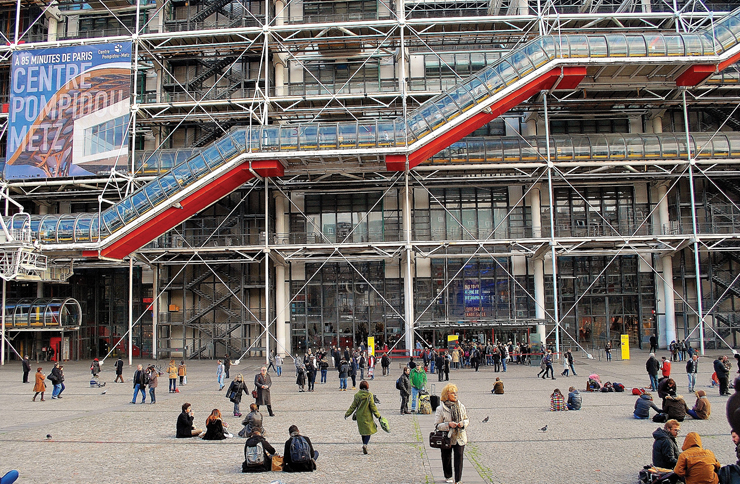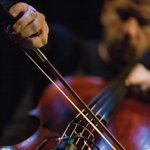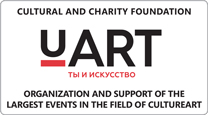2 November 2016
To “Kollektsia!”
Art Patrons Iveta and Tamaz Manasherov Participate in
a Pompidou Center’s Project
Text: Olga Muromtseva
The collection of Russian art in the P ompidou
Center is well-known internationally and includes works by Kandinsky and
Malevich, Chagall and Pevzner, Puni and Exter,
Bulatov and Kabakov — great names and seminal works all throughout … However,
the exhibition entitled “Kollektsia! Contemporary art of the USSR and
RUSSIA 1950−2000” , which recently opened in the museum, has become a
new revelation, eliciting sensational coverage in Russian as well as worldwide
media
|

|
|
The Pompidou Center, home of the National Museum of
Modern Art in Paris
|
In fact, it is far from common that a European museum (even
one of such a scale as the Centre Pompidou) receives a donation of about 250
works by major Russian contemporary artists, including Oskar Rabin, Vladimir
Nemukhin, Erik Bulatov, Ilya Kabakov, Boris Orlov, Francisco Infante, Vladimir
Yankilevsky, Leonid Sokov, Viktor Pivovarov, and many more, with each name
being equally important.
Olga Sviblova, the main inspiring and moving force of the
whole initiative, believes that what happens now should have happened long
before: finally, it will be obvious for everyone that Russian art of the second
half of the 20th century can and should be exhibited along with its European
counterparts. Soviet underground artists belonged to the same trends and
conveyed the same ideas as their Western colleagues. However, being separated
from the latter by the ‘Iron Curtain,’ they preserved their unique
character.
Apparently, these considerations have long been evident to a
number of Russian and French collectors fond of the so-called ‘second Russian
avant-garde.’ The current project was made possible with the immense help of
Ekaterina and Vladimir Semenikhin, Igor Tsukanov, Inna Bazhenova, and other art
lovers who donated works from their private collections, as well as Vladimir
Potanin Foundation that purchased works from artists and their families.
Iveta and Tamaz Manasherov, founders of U-ART: You and Art
Cultural Charitable Foundation, took part in this project, donating works by
Oskar Rabin and Eduard Steinberg, two of their most cherished and valued
artists from the 60s’ generation.
|

Artist Oskar Rabin and Iveta and Tamaz Manasherov
|
‘It has always surprised me that the Centre Pompidou didn’t
have a single work by Oskar Rabin, our great contemporary, whose Paris studio
faces the Beaubourg,’ says Tamaz Manasherov. ‘Centre Pompidou has a great
collection of the early 20th−century Russian avant-garde, which is exemplary
for us, as we collect works from the same period and by the same artists.
However, apart from collecting the avant-garde from the 1910s and 1920s, it
also seemed natural for us to buy works by our contemporaries such as Vladimir
Nemukhin, Eduard Steinberg, Oskar Rabin, and other figures from the 60s. They
always stressed their strong connections to the avant-garde of the
beginning of the century. This is why I suppose that it is a big step for the
administration of the Centre Pompidou, a brave yet well thought-out decision
to broaden the collection of Russian art and extend it up to the 2000s.’
‘As for works that we donated, as far as I know, Rabin will
be the first one in their collection, just as a work from the ‘village series’
by Steinberg,’ remarks Iveta Manasherova. She notes that the ‘village series’
belongs to the latest period in Steinberg’s work, the period that he
considered his greatest creative achievement. Titov Family no. 57, the
painting that will now be on view at the Centre Pompidou, is a meditation on
life and death, and homage to The Black Square and Russian icons. This is a
work that not only concludes Steinberg’s creative quest, but also reflects
philosophical, artistic, and literary pursuits of Russian intellectuals in the
20th century.
‘Oskar Rabin is one of my husband’s favourite artists. We
were regular visitors to his studio when his wife Valentina Kropivnitskaya was
still alive, and continued our meetings after she passed away. In our private
collection, we have Rabin’s works from different periods, and many of them are
especially difficult to part with, Bottle and Lamp among them. When Mr. Bernard
Blistène, Director of the Centre Pompidou, payed us a visit, he singled this
work out. It really embodies the life in Soviet barracks, and demonstrates the
artist’s mature approach. We appreciate the judgement of Mr. Blistène, so now
this work will represent Rabin’s oeuvre at the Centre Pompidou,’ says Iveta
Manasherova.
For the next six months, the display will be presented at
the Paris headquarters of the Centre Pompidou. It is important that Russian art
will be talked about, within the framework of an extensive educational
program. Afterwards, some works will remain in the permanent display of the
museum, while others will move to the branches of the Centre Pompidou.
All the participants of the project present at the
inauguration ceremony, were unanimous in their view of this project not as a
finished event, but rather as a first step on a long path of promoting Russian
art of the later 20th century, and including it in the international context.
Perhaps, we are soon to see new exciting projects that will prove that art is a
language commonly understood, and a great cementing force.
 |
 |
|
Eduard Steinberg, Titov Family no. 57, 1986
Eduard Steinberg created his ‘village series’ paintings during and after
summer months spent in his house in a village near the Vetluga river. As the
artist commented on this series, ‘in the church, there are obituaries, which I
tried to reproduce in art.’
|
Oskar Rabin, Bottle and Lamp, 1964
‘Bottle and Lamp’ is an early work by Oskar Rabin, coming from the 1960s
when the artist’s style and his concepts of object and space were in formation.
Two main ‘characters’ in this piece are an ‘Ilyich light bulb’ and a bottle of
‘Moscow Special Vodka,’ symbols of Soviet everyday life that were familiar and
likable to foreign art buyers who frequented the barrack in Lianozovo. The
uncompromised yet estheticized representation of the scarcity of life in the
barracks became Rabin’s trademark that helped him find his own path and a very
personal artistic universe
|
29 November 2016
The 8th VIVACELLO Festival, held as usual at various Moscow venues under the management of Boris Andrianov and the culture and charity foundation U-Art: You and Art, has exposed certain important issues concerning interpretation and perception of music written for so unhurried an instrument. (Osip Mandelstam likened the density of the cello timbre to honey flowing from a tilted glass jar)
3 October 2016
The exhibition entitled “Apartment no. 5: To the History of the Petrograd Avant-Garde, 1915–1925” was presented at the Marble Palace in St. Petersburg, supported by Unident Group and U-ART Cultural Charitable Foundation presided by Iveta and Tamaz Manasherov.
9 June 2016
The subject of music and art is a most captivating and treacherous one. It entices us with seemingly beautiful parallels and juxtapositions, with the ease of new discoveries.
3 June 2016
The VIVARTE First International Chamber Music Festival (organized with the support of UNIDENT Group of Companies) has ended in Moscow The concept of the festival was the synthesis of arts. VIVARTE unites chamber music and painting, traditions and avant garde. Eight days, six concerts, six masterpieces from the museum vault, 25 participants, “musical promenade” and jazz night.
19 May 2016
The gala awards ceremony of the 11th Innovation Prize took place at the Pushkin Museum of Fine Arts. It is the first time in the history of the competition that the laureates are awarded at a classical museum. This is why Innovation Prize 2015 ceremony can be called a groundbreaking event
Back














